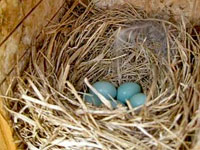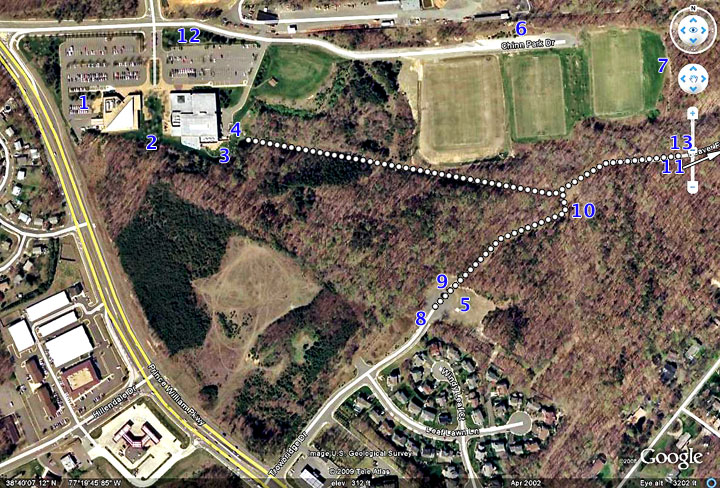Eastern Bluebird Trail at Chinn Park
 Volunteers make sure all is well, address problems as needed, and record information about activity in each of the nesting boxes included in the Chinn Park Bluebird Trail. Volunteers follow a protocol to ensure birds nesting in the boxes are not disturbed.
Volunteers make sure all is well, address problems as needed, and record information about activity in each of the nesting boxes included in the Chinn Park Bluebird Trail. Volunteers follow a protocol to ensure birds nesting in the boxes are not disturbed.
Bluebirds depend on the availability of suitable cavities in open habitats with sparse ground cover and little or no understory. Open areas that border woodlands are good sites for bluebird nesting boxes… backyards, golf courses, churches, school yards, cemeteries and more. Hollow branches, tree snags, old woodpecker cavities, fence posts and nesting boxes are all preferred sites for Bluebird nests.
As shown below, most nesting boxes are in public areas. We appreciate your help to make sure the Bluebirds and other cavity nesters using these boxes to raise their young are not disturbed.

Generally, Bluebirds lay four to seven eggs. These hatch in approximately 14 days. About 14 days after hatching, Bluebirds begin short flights and leave the nest soon after. In Virginia, Bluebirds produce two or three broods each year.
Both parents feed and care for the young. During the summer, Bluebirds eat grubs, caterpillars, beetles, grasshoppers, crickets, and other insects. In late fall and winter, they depend on wild fruits, such as crabapples, poison ivy berries, sumac, elderberries, and cedar berries.
![]()